
Old Amsterdam walking route
Like you might expect in a city that arose from the bog almost a millennium ago, Amsterdam can feel wonderfully old, especially when you’re wandering the iconic 17th-century gabled canal houses. Following this agenda, you can almost travel back in time and experience things as they were decades or centuries ago.
Begin with a simple breakfast

A butcher for breakfast? Why not? Pop into a bakery to pick up some bread and then head to Slagerij Louman, which has been in business since 1890, to experience what the former working-class neighbourhood of De Jordaan was once like. Grab a bal (a meatball) or some ossenworst (only-in-Amsterdam smoked raw sausage) and improvise a brekkie sandwich. If you want one made for you, head to the charmingly old-school Koopman on Elandsgracht.
Duration: 30 minutes
Hunt for flea market treasures
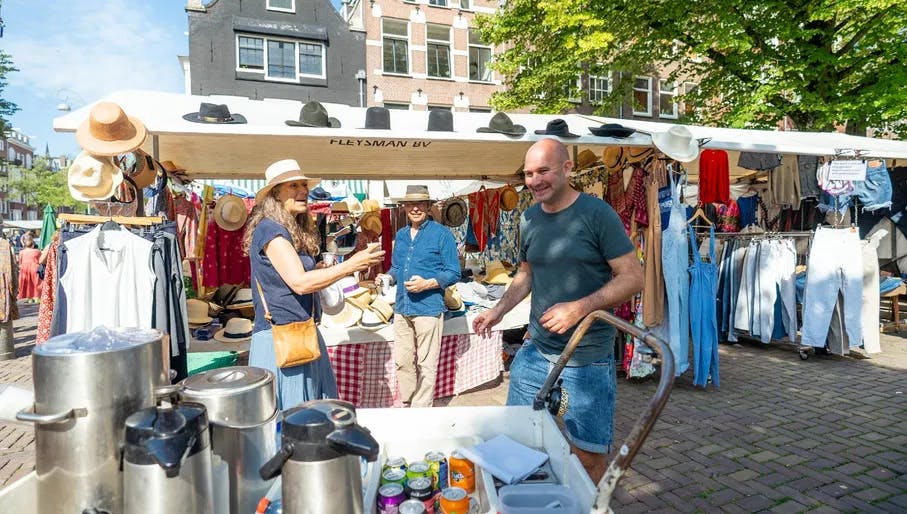
Every Monday morning, Noordermarkt becomes a flea market where you can browse knickknacks from days past. On Saturdays, a popular organic farmers’ market is also held here. If you want to browse antiques, you can always head to the Spiegelkwartier neighbourhood or the wonderfully labyrinth-like Antiekcentrum Amsterdam.
Duration: 1 hour
Explore a serene spiritual retreat in the city centre

The Begijnhof is one of Amsterdam's best-known hofjes (almshouses). It consists of a group of buildings surrounding a tranquil courtyard and was a home for the Beguines – a group of abstaining religious women. The last one passed away in 1971, and there’s even a sister buried in the gutter of the courtyard; flowers often adorn her resting place. Inside the Begijnhof chapel, you’ll find a series of panels telling the story of the Miracle of Amsterdam, a curious tale that involves a sick man vomiting his communion bread. And if that isn’t enough of a history lesson, the central English Church across the path was used by the pilgrims before they set sail for what became Plymouth Colony.
Also, the 16th century wooden house (Houten Huys) at Begijnhof 34 is one of the oldest in Amsterdam. It only lost this title a few years ago when another house – now the gay club Eagle – was found to be even older.
Duration: 30 to 60 minutes
Stroll over a bridge with a past

Stroll along the Singel and keep your eyes open for the Torensluis – the oldest bridge in town. This means ‘tower lock’ in Dutch; it’s named after a city wall tower that initially stood on the site until its demolition in the mid-19th century. You can still see the barred windows and arched entrance to the former jail cells nestled under the bridge, which are said to have been used for medieval drunkards. Today, the dungeon often hosts exhibitions and jazz concerts.
Duration: 15 minutes
Have coffee in Amsterdam’s oldest church
The Oude Kerk (Old Church) is officially the oldest existing building in Amsterdam and opened in 1306; much earlier than the spritely New Church across the Dam, which was built in 1408. The floors are made from tombs, including that of Rembrandt’s wife, Saskia. For a cheeky laugh, look at the carvings on the choir benches, and you’ll see medieval monks relieving themselves. The church also has a hidden gem of a café, De Koffieschenkerij, complete with a flower-filled garden. Coincidentally (or not), the church is located in the centre of the Red Light District, so saints and sinners abound.
Duration: 1 hour
Sample fresh fish with views of a tiny castle

Not far from the Oudekerk is the De Waag (The Weighing House) on Nieuwmarkt. Resembling a small castle, this building has served many purposes over the years, acting as a guildhall, fire station and a museum. Perhaps most famously, it is featured in the Rembrandt painting The Anatomy Lesson of Dr. Nicolaes Tulp. While many ageing cafes line the surrounding square, you can grab some raw herring from a stall or head to the tiny Amsterdamsche Vischhandel at Zeedijk 129, which has been in business for over three generations.
Duration: 1 hour
Discover potions, prescriptions and more

The Nieuwmarkt neighbourhood is filled with shops patinaed by age. At the corner of Geldersekade and Stormsteeg, the Apotheek W.H. van der Meulen has served locals since the 1600s. The 18th-century herbalist Jacob Hooy is still going strong as well, though these days they also stock tea and skincare products. If you want to spend the afternoon browsing shops that are older than your grandparents, check out Patisserie Holtkamp (which serves excellent shrimp kroketten), chocolaterie J.G. Beune, art deco cigar store Hajenius, coffee and tea merchants Wijs & Zonen and seafaring specialists L.J. Harri.
Duration: 30 minutes to 3 hours
Head out by bike on the cobblestones of history
Instead of shopping, you can take a leisurely bike ride along one of Rembrandt’s favourite sketching routes. Simply follow the Amstel River past the Riekermolen windmill and onward to Ouderkerk aan de Amstel, a town that may even be more ancient than Amsterdam. Or you can check out the quickly transforming Amsterdam Noord. After a short ferry ride from behind Centraal Station, you’ll see old gabled homes along the Buiksloterdijk and Nieuwendammerdijk – the latter also features quaint Café 't Sluisje. You can then even head further afield to Ransdorp, Zunderdorp or Durgerdam and feel like you’re in a different century.
Duration: 2 to 3 hours
Don't miss cocktail hour at Wynand Fockink
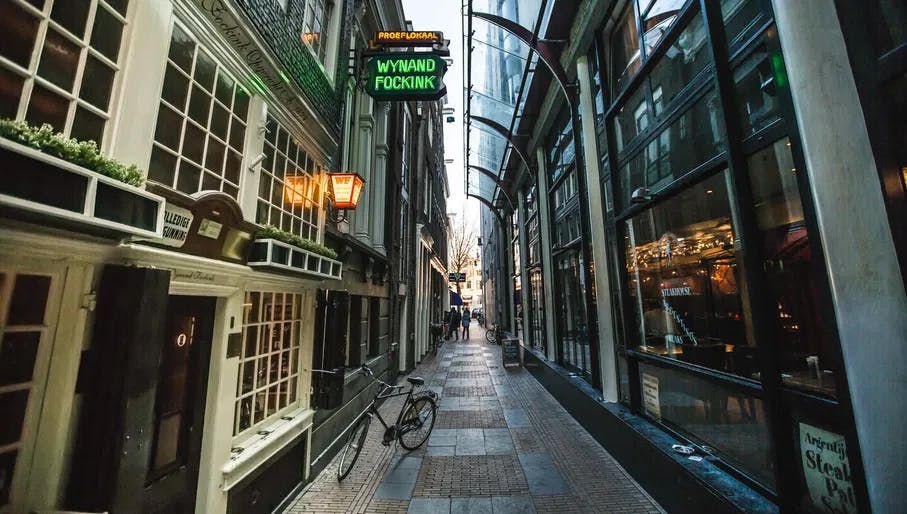
After a long bike ride, make time for a cocktail. Head back into town to enjoy a tipple at Wynand Fockink, a standing room-only distillery that has spent centuries specialising in jenevers – the original gin – which is consumed by slurping your first sip from the top of an almost-overflowing glass.
Duration: 1 hour
Time for dinner

Amsterdam has plenty of aged dining establishments. The oldest is likely Grand Hotel Krasnapolsky’s incredibly elegant The White Room, which has been going for 135 years. If you’re looking for something casual – and don’t mind sharing a table – try Hap-Hmm.
Duration: 1 to 2 hours
Relax with an evening of movies and monkeys
If you are not much of a café dweller, you can always opt for an old cinema like De Uitkijk, The Movies or the stunning Pathe Tuschinski. Otherwise, you can weigh in on the debate about which café is the oldest in the city. Located in a wooden building on the Zeedijk, In ’t Aepjen is certainly a contender. According to legend, it was a hostel for sailors who would trade in their souvenir monkeys when they ran out of money, leading to the occasional flea infestation. To this day, ‘staying with the monkeys’ is a common Dutch phrase to describe being down on one’s luck.
Then there’s Café Chris, which opened its doors in 1624 as a beer house, and as such is the oldest café in the Jordaan. The story goes that builders working on the nearby Westertoren came to collect their pay in this brown bar. Other quality old school establishments include Café Welling and Café de Wetering.
Duration: 2 hours
Wander through some once-neglected 17th-century islands

The 17th-century warehouses of the artificial Western Islands (Westelijke Eilanden) were used by the Dutch West India Company to store goods including herring, grain, tobacco, wine, salt and cat skins – with the latter, a petting zoo perhaps acts as a memorial of sorts. In the early 20th century, the area was abandoned before being brought back to life by squatters and artists, who now happily live in the most scenic part of town.
Duration: 1 hour
Related articles
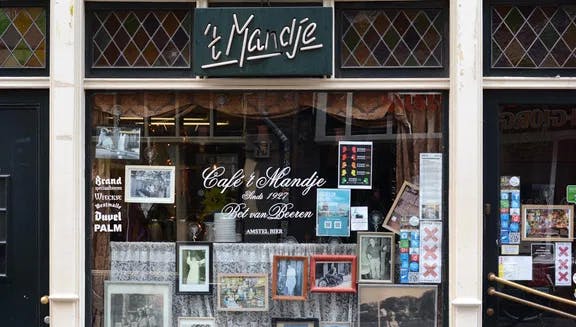
LGBTQI+ history walking route

Chinatown walking route
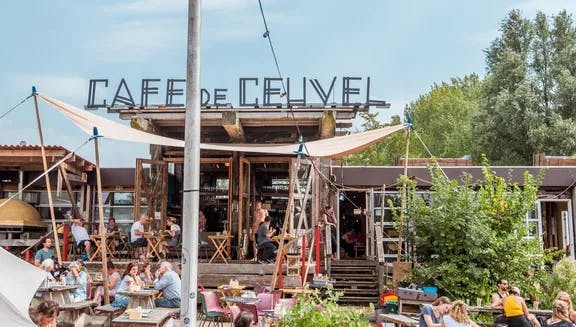
Green and sustainable walking route

Weesp walking route

Amsterdamse School walking route

Jewish Cultural Quarter walking route
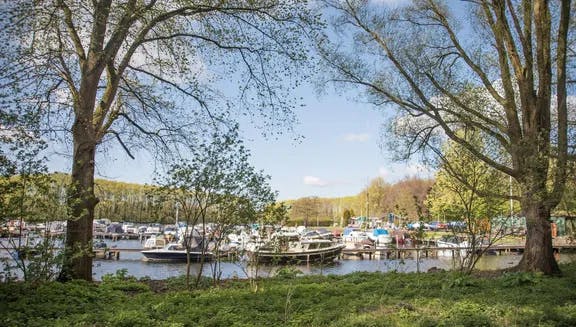
Geuzenveld-Slotermeer walking route

Influential women walking route
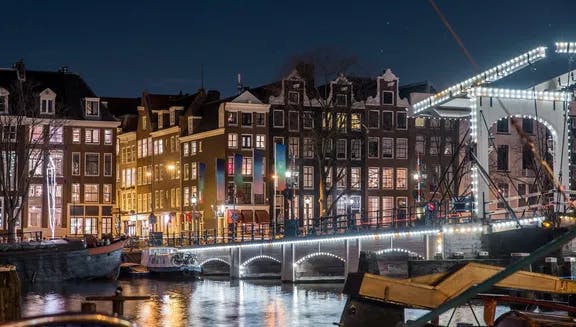
Romantic stories walking route







